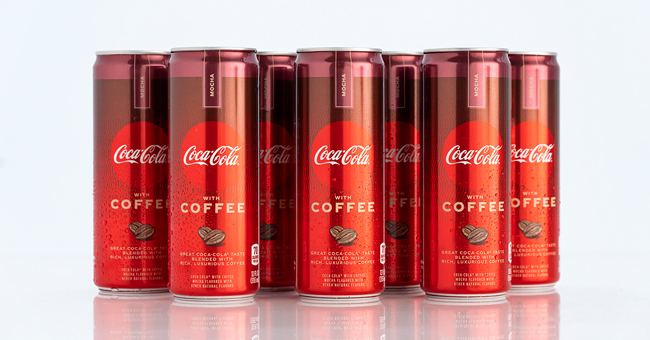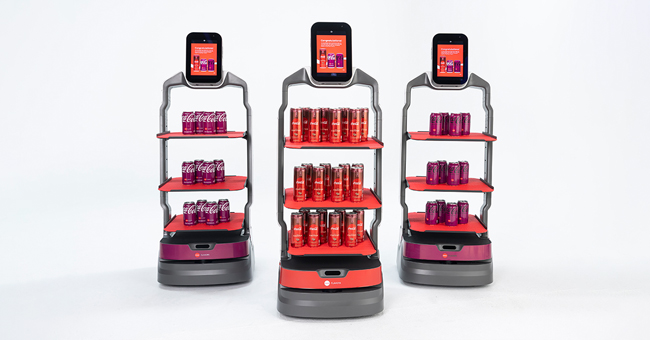

While divesting from some of its other well-known, better-for-you brands in recent years, Coca-Cola has been eager to use its flagship soda line as a platform for innovation, both inside the can and out.
This morning, the company announced the release of Mocha, the fifth SKU for the Coca-Cola with Coffee line introduced in January 2021. While the much-touted launch of Coca-Cola Energy quickly fizzled in the U.S., Coca-Cola with Coffee has established itself as an opportunity worth developing further, with 88% of consumers who have purchased the product saying they will buy it again. After seeing Vanilla emerge as the line’s top-selling flavor, Brandan Strickland, brand director for Coca-Cola Trademark, said that launching Mocha was “a no-brainer” as it’s the “No. 1 flavor in the RTD coffee category.”
According to Strickland, the company is seeking to grow use occasions for its products to provide consumers an alternative energy choice to coffee “during the mid-afternoon lull.” Sparkling water line AHA also plays in that space with its lightly caffeinated options (30 mg), while BodyArmor’s EDGE line (100 mg) offers a higher dose.

“Because we know that while there’s nothing better than a 3 p.m. ice-cold Coke, we are competing with coffee during these break moments,” he said, describing the Coke soda-coffee combo as “the best of both worlds.”
Perhaps more innovative, however, is how Coke plans to get its new flavor into consumers’ hands. Starting today, users in the Chicago, Los Angeles and New York areas can apply for a chance to receive free samples of the new products delivered via a fleet of self-driving vehicles. For consumers outside of those cities, an on-demand delivery program will be offering sample boxes in 3-7 business days.
Ecommerce and technology continues to influence distribution strategy at the global beverage giant, from integrating voice ordering into smart speaker systems like Amazon Echo to teaming with Walmart for drone deliveries in Georgia. Coke CEO James Quincey has spoken openly about the company’s commitment to digital development, though the company has thus far used 3PL partners like goPuff for rapid delivery in urban areas and college campuses. With today’s robot delivery launch, Coke is bringing at least some of that back in-house, for now. Recall that the soda giant became a minority investor in digital ordering platform and brand house Iris Nova in 2018, but that partnership has since gone quiet.

The move also gives Coke a foothold within the booming app-powered rapid-delivery space, which has seen more than $14 billion in investment since the start of the pandemic according to data from Bain & Company. DoorDash, Uber, Drizly and others have already positioned themselves as players, while the recent U.S. launch of Turkish company Getir, which aims to deliver grocery items in under 10 minutes, underscores the amount of competition within the growing market.
Coke is also using a redesign of its Coca-Cola Flavors collection — composed of Coca-Cola Cherry, Coca-Cola Vanilla and Coca-Cola Cherry Vanilla — to visually distinguish between its full-calorie and Zero Sugar varieties with black and white logo script. Meanwhile, single flavors will receive a monochrome full-color wrap, while “dual flavors” (Cherry Vanilla) will feature two colors. The change is an extension of the rebrand for trademark Coke that debuted last year in the classic Original and Zero Sugar flavors, with the general idea being to “modernize and simplify the look of our packaging to help consumers find the flavor they’re looking for on the shelf,” according to Natalia Suarez, senior brand manager of Coke Choice Portfolio, Coca-Cola’s North America Operating Unit.
The revamp comes a few months after Coke unveiled its new brand design identity, dubbed “Real Magic,” for the core soda line (including Diet and Zero Sugar) meant to grow its consumer base “through an ecosystem of experiences anchored in consumption occasions, such as meals and breaks, and merged with consumer passion points like music and gaming.”